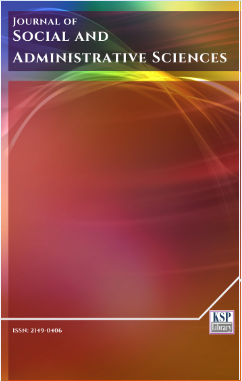Cinema semiotics: An application of Hodge and Tripp’s Paradigm/Syntagm approach
Abstract
Abstract. Various scholars have defined the term semiotics according to their understanding but with a unifying central meaning which is the study of signs. Two important aspects of semiotics are syntagm and paradigm. The organization of signs by chain is referred to as syntagm, while by choice it is referred to as paradigm. According to Hodge & Tripp (1986), as far as syntagmatic structures are concerned, texts are examined from three different angles or variables: space, time, and continuity. Moreover, in film the interpretations of individual, shots depend on both paradigmatic analysis (comparing it, not necessarily, with the use of alternative kinds of shots) and syntagmatic analysis (comparing it with preceding and following shots). This paper, applies the concept of Syntagm and Paradigm given by Hodge and Tripp to analyse the structure of two films from Nigeria’s film industries i.e. Kanywood and Nollywood industries.
Keywords. Cinema, Semiotics, Syntagm, Paradigm, Film, Kanywood, Nollywood.
JEL. Z00, Y90, H80.Keywords
References
Anttila, A. (2009). An integrated and recreated nation: Socio-semiotic approaches to finnish vacation propagandist short films in the late 1940s, Visual Studies, 24(1), doi. 10.1080/14725860902732702
Berger, A.A. (2000). Media and Communication Research Methods. An Introduction to Qualitative and Quantitative Approaches, Sage Publications, Inc. Thousand Oaks Carlifonia.
Buckland, W. (2004). The Cognitive Semiotics of Film, Cambridge University Press, Cambridge United Kingdom.
Chandler, D. (2000). Semiotics for Beginners. [Retrieved from].
Djauro, H. (no date). Marriage and its problems in Nigeria. Gamji.com. [Retrieved from].
Egbe, B.E., & Benson, T. (2013). Two Brides and a Baby movie. Lagos Nigeria. B’Concept network production Limited.
Fiske, J. (1990). Introduction to Communication Studies, London, United Kingdom, Routleadge, 11 New Fetter Lane.
Garba, S., & Muhammad, Y. (2013). Gabar cikin gida movie, Kano and Abuja Nigeria. Two Effects Empire.
Geiger, J., & Rutsky, R.L. (2005). Film Analysis: A Norton Reader, first edition, United States: W.W. Norton and company.
Hogde, R., & Tripp, D. (1986). Children and Television: A Semiotics Approach. Stanford University Press, Stanford, California.
Metz, C. (1974). The Cinema Language or Language System in Problems of Film Semiotics. United States: University Of Chicago.
Metz, C. (no date). From film language: Some points in the semiotics of the cinema. [Retrieved from].
Rose, G. (2001). Visual Methodologies, An Introduction to the Interpretation of Visual Materials. London, Thousand Oaks: SAGE Publications.
Saro-wiwa, Z. (2008). No going back, [Retrieved from].
Taylor, S., & Willis, A. (2007). Media Studies, Texts, Institutions and Audiences, Blackwell Publishers Inc, Oxford.DOI: http://dx.doi.org/10.1453/jsas.v5i1.1591
Refbacks
- There are currently no refbacks.
....................................................................................................................................................................................................................................................................................................................................... Journal of Social and Administrative Sciences - J. Adm. Soc. Sci. - JSAS - www.kspjournals.org
ISSN: 2149-0406
Editor: editor-jsas@kspjournals.org Secretarial: secretarial@kspjournals.org Istanbul - Turkey.
Copyright © KSP Library




